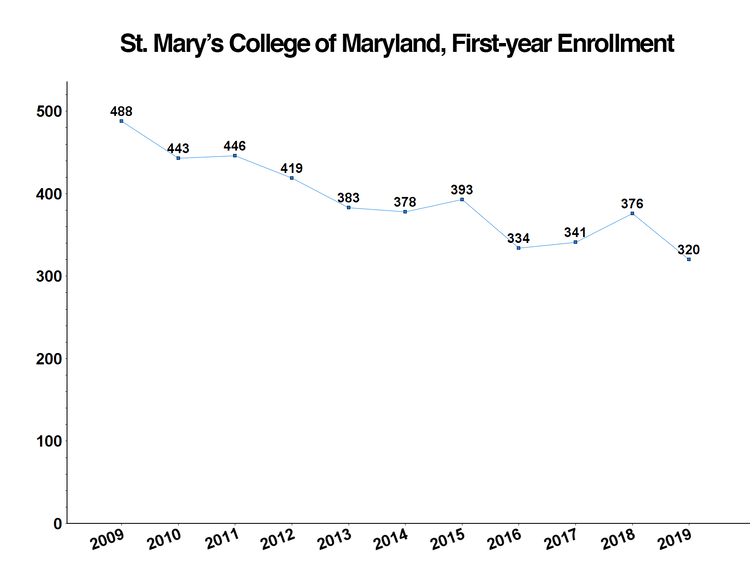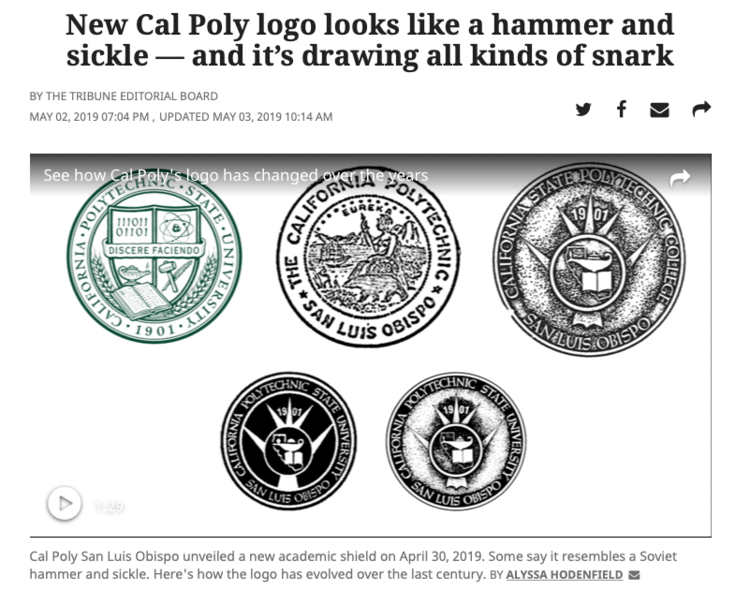Onboarding a new university client is one of the big joys of my line of work. There’s really nothing quite like getting to see a new campus up close for the first time, learning about its proud history and traditions, meeting earnest and ambitious students, and connecting with the vice presidents of enrollment and marketing whose job it is to make sure the campus thrives long into the future.
In these early days of the client relationship, it’s impossible to see so many people dedicated to making themselves and the world better and not to feel optimistic—about the school’s chance for success, about the promise of higher education, and even about the future of America itself.
But I’ve been doing this work long enough to know that those early days of optimism always give way—as they do in all relationships in life and in business—to reality. Layer by layer, you begin to understand where the other party has been, the challenges they face, the work they have yet to do, and the role you can play in helping them get there.
For a college whose primary goal is to increase enrollment, the usual challenges eventually reveal themselves.
They range from well-documented issues that affect many schools, like shifting demographics or increased competition, to beneath-the-surface difficulties, like a history of poor internal processes, a lack of collaboration between enrollment and marketing teams, or a lack of clarity in the market about why a student should attend (a brand problem).
As a sort of case study in what addressing these challenges looks like up close, I’d like to share with you the recent experience Waybetter had with helping one of our partners, St. Mary’s College of Maryland, overcome several of these obstacles as they fought to reverse a long trend of declining enrollment. It’s a story I’m proud of for many reasons, but chief among them is that it provided me the chance to work alongside David Hautanen, St. Mary’s chief enrollment officer, somebody I’ve come to know and respect.
Looking Beneath The (Beautiful) Surface
The first thing you might think when you arrive at St. Mary’s is: How could a place like this have enrollment trouble?
Situated directly on the St. Mary’s River in the town of St. Mary’s in southern Maryland, you’d be hard pressed to find a more serene setting for a small college. It’s absolutely beautiful, and the campus and buildings are all meticulously maintained. Curb appeal certainly isn’t the issue. I mean, just look at this place.

Which might prompt you, then, to think: Ok, sure, it’s beautiful, but maybe the reputation isn’t that great? But that’s a dead end too. St. Mary’s is ranked as one of the top five public liberal arts colleges in the country, and it’s very well regarded for its academics and beloved by its very proud alumni.
Maybe the price is too high? Now you’re grasping at straws. As a public college, tuition at St. Mary’s is very affordable, especially for Maryland residents, who make up most of the student body.
So what gives? St. Mary’s is a beautiful college, it’s well respected, and the price is right. And yet its enrollment trend line looks like this, descending from a high of 488 first-year students in 2009 to a low of 320 in 2019…

The answer is perhaps a little nuanced, but not terribly. In short, like many colleges, St. Mary’s had been slow to respond to changing market forces (namely, aggressive competition for a shrinking population of students). When you’re already a small school, it doesn’t take too many “a little bit down” years to result in a real problem.
Recognizing the Problem, Pulling Together in the Right Direction
As Carolyn Curry, St. Mary’s vice president of advancement, put it to me in one of our first meetings, “It seemed there was an expectation here that students would just… keep showing up. Maybe that was true once, but obviously that’s not the case anymore.”
Fortunately for St. Mary’s, Carolyn recognized that combatting this trend was the institution’s top priority, and she began organizing efforts to turn things around. She was soon joined by David Hautanen, the vice president of enrollment, who arrived shortly after she did.
David’s assessment was similar. “St. Mary’s has so many great things going for it,” he told me. “It really just seemed like our job was to get to work doing the fundamental things we know can increase enrollment. Everything from search to events to our CRM had to be rebuilt from the ground up.”
The creative agency CCA was also brought in to help redefine and refresh the St. Mary’s brand. Higher ed branding agencies tend to make me nervous (more on this later), but CCA is that rare agency that understands how marketing and enrollment work together inside a university. Their vice president of client services, Lauren Herrington, has no problem being direct about it either. When I asked her why CCA was so attentive to issues of enrollment, she couldn’t have been clearer: “If you don’t have enrollment, you don’t have a school.”
That’s about as black and white—and as true—as it gets.
Laying the Groundwork for a Multiyear Plan (and Digging into the Data)
It was a relief to see that everyone at St. Mary’s understood that reversing their enrollment trend was the main priority, and that they were willing to truly work together to achieve it. (Too often I see schools where everyone agrees in theory that enrollment needs attention, but then silos, egos, and stubbornness stop progress before the first meeting ends).
The strong consensus at St. Mary’s allowed Waybetter to do what we do best: help organize all the players involved around building an enrollment marketing process that is actionable and repeatable—a plan that can generate results for years to come.
We started at St. Mary’s where we always start: with a deep dive into the data. And it didn’t take us long to discern part of the reason they were having difficulty attracting new students.
St. Mary’s previous search partner had made some troubling decisions regarding targeting and acquisition in their name buys. Our first move was to address these errors. We overhauled their search process by:
- Building profiles that reached all the students St. Mary’s wanted to attract and could reasonably hope to win—these were primarily in-state students, with some thoughtful and budget-conscious outreach to other markets.
- Acquiring names consistently—instead of reaching out just once, we helped St. Mary’s license new names as they became available in the cycle, ensuring that all good-fit prospects were being made aware of the great opportunity that awaited them at St. Mary’s.
Once we laid the foundation of good data, we could begin the long process of saying relevant things to the right students throughout the entirety of the funnel—from the point of awareness through the point of deposit, across multiple multichannel marketing campaigns.
And good marketing is chiefly about good process. In fact, a team that’s good at process but only average at “marketing” will always beat a team that’s good at marketing but who stinks at process. It’s just how the long enrollment cycle (and life in general) works. You have to do the day-in, day-out work, over and over, if you want to see a real result.
Saying the Things that Matter, to the People They Matter To
I’ve long argued that higher ed institutions spend far too much money and time on “rebranding” exercises that have no meaningful effect on their short- or long-term bottom line. Why? Because overpriced brand exercises are the opposite of good process. They’re one-shot deals that don’t produce a repeatable result.
At most places, in fact, a rebrand is almost always more trouble than it’s worth. After all that time and effort, you’ll roll out your new “identity” and then face the same fate most schools face after spending hundreds of thousands of dollars on a new logo: the students will hate it so much they’ll introduce a petition asking you to change it back, as happened at Cal Poly just last year.

But as I mentioned earlier, CCA isn’t your average brand agency—I’d worked with them before and knew they understood what was at stake. And the brand work they did at St. Mary’s was entirely actionable, by which I mean they produced a communications platform—a way for St. Mary’s to talk about itself—that could be operationalized across a variety of enrollment campaigns.
They also provided necessary clarity about the kind of college St. Mary’s actually is. In addition to a new visual identity, CCA helped Carolyn’s team build a brand that centered around its distinction as “The National Public Honors College,” a tagline that does a lot of work in touting St. Mary’s rare combination of affordability, prestige, and accessibility.
The work CCA and Carolyn’s team collaborated on was really well executed—it looked and sounded great. It even won dozens of awards from organizations around the country. But having spoken with Carolyn, I know the real victory for her was the result these efforts produced.
Clear Communication, Real-time Responsiveness
One of the cool things that David and Carolyn do at St. Mary’s is host a standing monthly meeting where their internal teams and their external partners get to share information—we’re literally all on the same call together reporting key findings and insights. This openness and transparency is not only good for culture and morale, it legitimately affects the bottom line.
Because we were in frequent communication with all parties, we were able to maximize St. Mary’s resources and limited budgets. For example, we were able to do things like take over part of St. Mary’s digital advertising budget to drive activity at key points in the application cycle. These were technically “marketing’s dollars,” but with no egos on the line, we were able to do the most with them.
Similarly, when COVID-19 hit, we were able to report back to St. Mary’s and CCA about the sentiments we were seeing in our yield campaigns, and they were able to alter the tone and content of their messaging—across all their campaigns—to reflect the new reality.
Real Results… Now Repeat
I’m beyond proud to share that St. Mary’s will be welcoming its biggest class in eight years this fall. Their 398 deposited first-year students (even after losing some to deferrals because of the pandemic) represents 24% growth over the previous year.
But as proud as I am of the role Waybetter played in this first year, I’m more excited about what the future holds for St. Mary’s. David and Carolyn have built something special, and I know we’ll all continue to bring out the best in each other.
So what’s next? Well, our job now is to keep our foot on the gas and to not forget what we did to get here: a lot of hard work focused on the areas we can control, with a little bit of room to be aspirational.
When I put it this way, I know it sounds almost boring—but real success almost always is! Marketing and enrollment teams that jump from one flashy thing (new logo, new TikTok account, etc.) to the next might look like they’re being productive and having loads of fun, but really they’re just creating the illusion of activity as their tires spin. It’s exhausting!
If you’re exhausted of being exhausted, take heart. There’s a way to win the battle, and it’s ok to start small. Just start with the basics. If you ever want to talk it through, feel free to reach out—boring guys like me always answer the phone.
